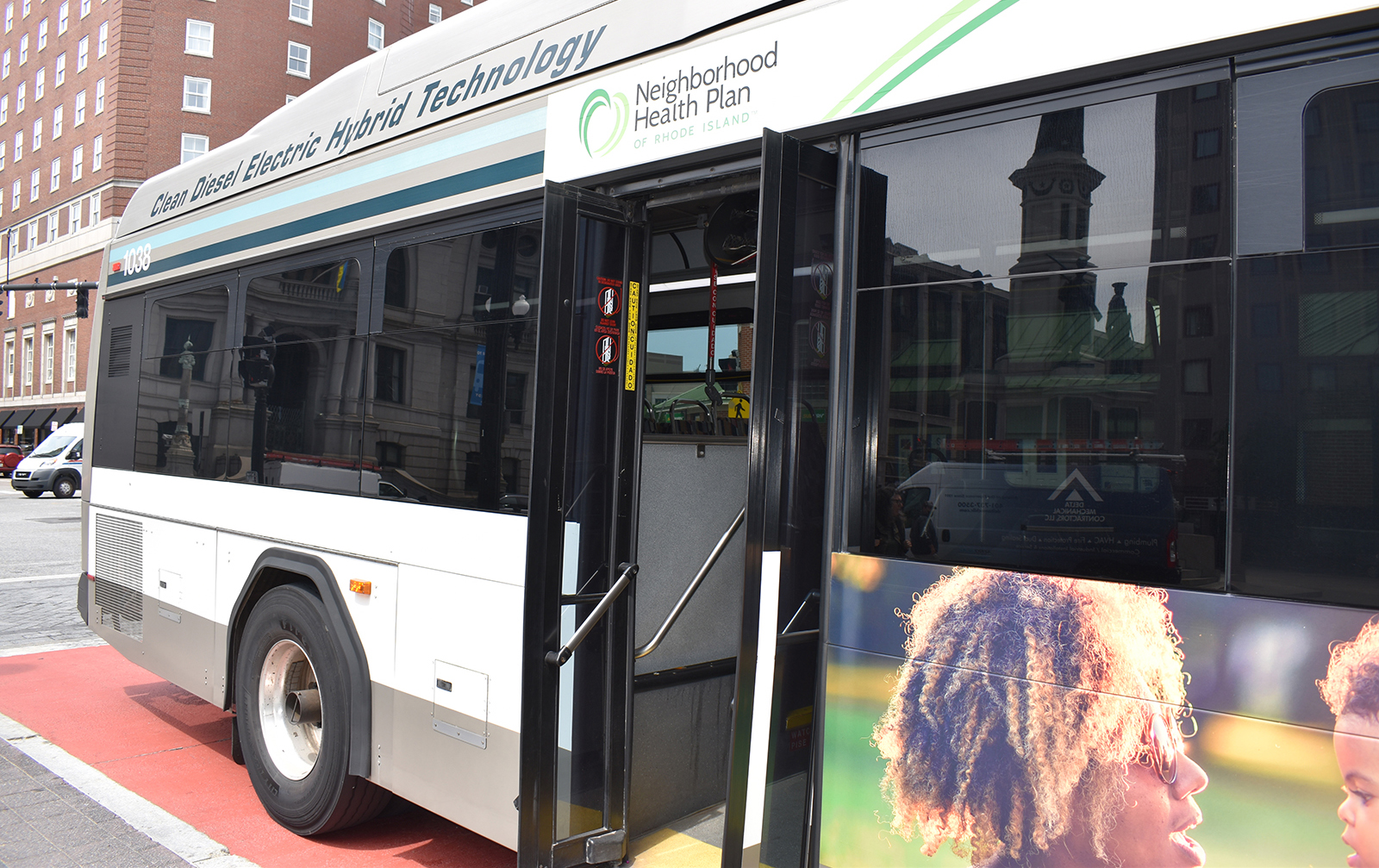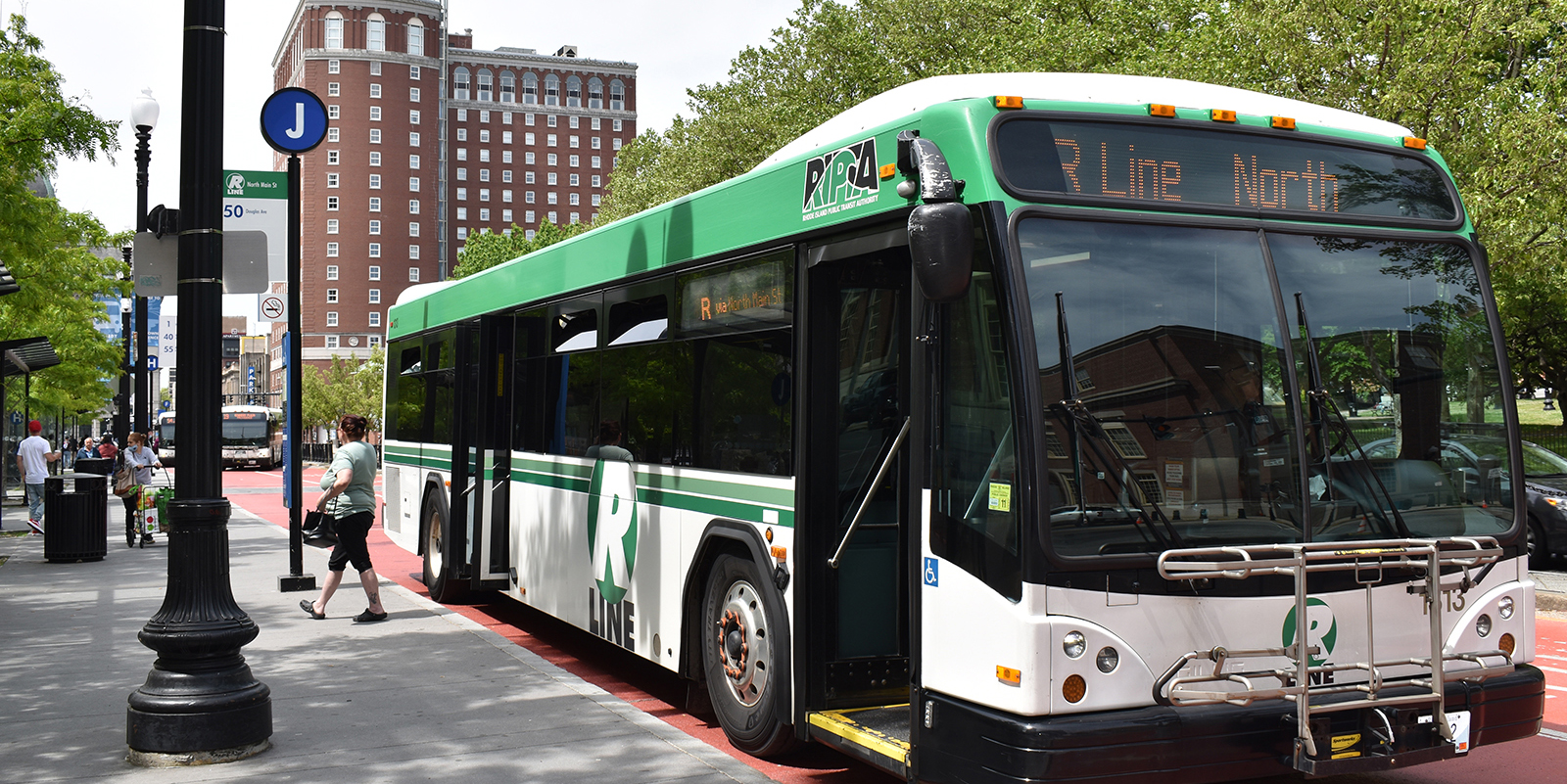Transportation Committee Hears Urgent Pleas to Revamp Rhode Island’s Transit System
November 18, 2022
PROVIDENCE — Rhode Island’s failure to meet its transportation goals and promises made in recent years will have deep impacts on public health and whether or not the state meets its climate goals.
That was the message almost two dozen speakers brought to this month’s meeting of the Transportation Advisory Committee (TAC), the body responsible for forwarding transit recommendations to state planning officials.
The State Planning Council adopted two significant plans in December 2020, the Transit Master Plan and Bike Mobility Plan, with each providing a step-by-step outline on how to improve bus and rail services and bicycle infrastructure.
But in the years since their passage, activists say state officials have left the plans lingering on the shelf, despite budget officials reporting a $610 million surplus this fiscal year. Transportation officials have instead favored repairing and widening a number of high-profile bridges and highways, with little evidence that the plans are being executed through the state’s $9 billion 10-year transportation budget.
“We want to see some more will to change direction and have a more balanced, climate-friendly, people-friendly, environmentally friendly transportation system,” said Scott Wolf, executive director of Grow Smart Rhode Island. “We think that if the Transit Master Plan and Bike Mobility Plan are treated like a chihuahua — as cute things to be petted and not implemented — the results will negatively impact the economy, climate change and [equity] for current Rhode Islanders.”
A recent study of census data showed that about 9% of Rhode Island households don’t own a vehicle, and those households tend to be low-income.
David Mann, operations director at AS220, a community arts organization, told committee members at the Nov. 17 meeting his nonprofit rents out 50 units of affordable housing downtown and many of the renters don’t own a personal vehicle, using Rhode Island Public Transit Authority (RIPTA) bus service to get around.
“If you can’t get to a job, you can’t be a functioning member of society; if you can’t get to a grocery store, you can’t be a functioning member of society,” Mann said.
Others emphasized the growing costs of car ownership for people on fixed incomes.
“There are many seniors living on fixed incomes, with Social Security [benefit] increases not keeping up with the cost of living,” said Patricia Raub, coordinator for RI Transit Riders. “We may have a car but find it difficult to pay for gas and other expenses that go with having a car.”
“Tens of thousands of Rhode Islanders feel left behind by the transit system,” said Rep. David Morales, D-Providence, who noted he was “speaking particularly of the working people in rural counties of this state, the folks that are not living in the urban core, who do not have access to high-quality, reliable transportation.”
In July, a coalition of 36 community organizations signed a letter addressed to the candidates running for governor, asking all of them, if elected, to radically overhaul how the Rhode Island Department of Transportation (RIDOT) prioritizes projects and fully fund the transit and bicycle mobility plans.
The letter noted that gas- and diesel-burning vehicles are a climate and public health risk. Eleven percent of Rhode Island children have asthma, according to the state Department of Health, and children of color are three times more likely to have asthma than white children, especially if they live near highways.
Additionally, 60 people are killed by car crashes every year, and another 300 are injured, according to the letter.
“RIDOT does not currently have the expertise, capacity, or desire to prioritize projects that will address affordability, health, mobility, racial inequity, economic development or climate change,” wrote the organizations. “Rhode Island’s next governor must prioritize reform at RIDOT.”
At a gubernatorial forum on the environment in early August, Gov. Dan McKee, who has since won re-election, said the state was making strategic investments in infrastructure, but did not comment on whether he would reform RIDOT.
The state is running out of time to help mitigate climate change. Last year’s greenhouse gas emissions (GHG) inventory showed the transportation sector accounts for the lion’s share of all emissions in the state, to the tune of 35%. Statewide emissions also rose 1.8% from the previous GHG inventory.
Rhode Island is required by the 2021 Act on Climate law to reduce GHG emissions by 45% by 2030, as part of a larger goal to reach net-zero emissions by 2050. If the state fails to meet any of its benchmark goals, state government would open itself to legal challenges.
“There is no way we can achieve that without reductions from the transportation sector,” Christian Roselund told TAC members. “A move toward electric vehicles will not deliver the cuts we need to meet our climate targets. Only 25% of cars on our roads will be electric, because the average car stays on the road for at least a decade after being sold.”
Activists noted that despite the overarching, pressing need for the state to reduce climate emissions, RIDOT has instead chosen to widen and expand highway lanes, such as the 6/10 interchange project, often through the minor amendment process. RIDOT is currently planning to widen a 5-mile stretch of Interstate 295 North from Route 37 to Route 6 in the name of safety and congestion reduction.
(Despite claims that highway widening reduces congestion, sometimes called induced demand, time and time again it has been proven to actually have the opposite effect: more highway lanes leads to more traffic.)
But transit riders, residents, and activists remain optimistic. Wolf noted to the committee that the last time voters had the chance to approve a $35 million bond for transportation projects it passed with 60% of the vote.
“The state has good bones, there’s a good opportunity to meet these goals,” local resident Matt Schaelling said. “These goals aren’t pipe dreams. With the federal money that’s floating around, these goals can be met.”




RIDOT is downsizing the 6 lane Henderson Expressway into a 3 lane city street. They have built a flyover ramp from RI 10 NB to US 6 WB that has pulled lots of traffic out of Olneyville. They are removing a dangerous weaving conflict on 95 NB. They are pushing highway improvements that enhance safety and improve quality of life. They are also realistic about the fact that people aren’t going to give up their cars. And their policy of investment in highway improvements has not begat more congestion. Providence has more people than Hartford but substantially less congestion. If Rhode Island listens to these anti-mobility activists, the state will be in a bad way.
i support better public transportation for rhode island. there are many people, as the article points out that do not have cars and need mobility. however the constant chastizing of projects which improve infrastructure by the cohort of commenters quoted in this article is a bit foolish. as bill poundstone points out the infrastructure improvements such as the reconfiguration of Rt 10 have gone a long way to eliminate traffic congestion and extended travel times all of which help to reduce GHG. the emphasis on the construction of bike paths (which i support) is not going to help the state reduce GHG, it will enhance the quality of life. however people are not suddenly going to ride their bikes to work just because there is a bike path. plus the fact that even if they do bike to work it is not going to be a year around activity. i m on the road 25% of my week and running into unnecessary highway back ups just due to congestion and the fact that many people can’t drive in heavy traffic without a white knuckle grip on the steering wheel limits my income, burns more gas and forces me to be back on the road again due to the lost time. champion your public transportation and bike path goals but please stop demonizing the long overdue infrastructure improvements that benefit everyone, even those without cars
Public transportation in Rhode Island until it becomes convenient reliable cost effective and a pleasure to use.
This is a tall order because currently buses don’t run near my home on a consistent manner.
My comment at the meeting was essentially that we should do transportation differently because our current auto-centric transportation policies (e.g. spend big money to expand highway capacity – think I-95, 295, 195, 37, 146, 6-10…, stall bike projects, make transit less convenient and more confusing with the RIDOT plan to break up the central Kennedy Plaza hub…) are not helping us achieve many official state goals. These include reducing vehicle-miles traveled, reducing highway deaths and injuries, curbing sprawl, revitalizing core cities, cutting down on our energy dollars flowing out to out-of-state oil companies, and above all, reducing our climate emissions. But a guide to how to do transportation differently is easily available – implement the transit and bike plans (even if those who don’t care about those goals or just want to speed thru the city don’t want to do this)
For those of you who’ve not visited the “Not Just Bikes” website, it’s a great place on YouTube to learn about working alternatives to the car-centric North American paradigm–and some successes we’ve had even here in the U.S…. By way of explaining; Right after World War II Holland was rather ashamed of their then bike culture and moved away from it. In the resultant relatively not-too-distant past Holland had looked very much like the U.S. in terms of car-centric mobility (1960s for example). They made a distinctive, purposeful effort to change that car dominant paradigm in the 1970s onward and are reaping the rewards. A happier, healthier population. Of interest also on Not Just Bikes tutorials is the deep dives into the increase in property values once more pedestrian / bike friendly / public transport infrastructure is created. It is an entrenched myth that people are happier living in this mechanized industrial landscape. OH! and the amount of persons transported in the Dutch / Similar systems? Rivals or exceeds what we have, while achieving “Kinder, and Gentler” outcomes.